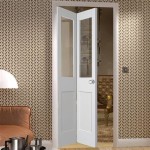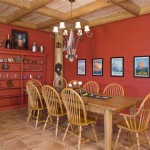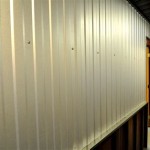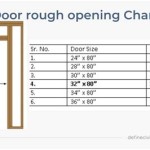Best Types of Wood for Interior Doors and Exterior Walls
Choosing the right wood for your interior doors and exterior walls is a crucial decision that impacts both the aesthetics and longevity of your home. Different wood species possess unique characteristics, such as hardness, durability, grain patterns, and cost, making it essential to consider your specific needs and preferences. This article will explore some of the most popular and suitable wood types for interior doors and exterior walls, highlighting their strengths and weaknesses.
Hardwoods for Interior Doors
Hardwoods are known for their strength, durability, and aesthetic appeal, making them an excellent choice for interior doors. They are typically denser than softwoods, offering better resistance to scratches, dents, and wear and tear. Here are some popular hardwood choices for interior doors:
Oak
Oak is a classic choice for interior doors, renowned for its strength, durability, and distinctive grain patterns. It comes in various species, including red oak and white oak, each possessing unique characteristics. Red oak is generally less expensive than white oak and features a reddish-brown hue with prominent grain. White oak, on the other hand, boasts a light, creamy color and tight, consistent grain, making it a popular choice for more formal settings.
Maple
Maple is another excellent hardwood option for interior doors, known for its hardness and captivating grain patterns. It features a light, creamy coloration that can range from pale yellow to reddish-brown depending on the species. While less durable than oak, maple is more resistant to moisture damage, making it suitable for humid environments. Its smooth surface finish also makes it an attractive choice for modern homes.
Cherry
Cherry is a luxurious and elegant hardwood characterized by its rich, reddish-brown color that deepens with age. It features a fine, consistent grain pattern and a natural sheen, adding a touch of sophistication to any room. Cherry is relatively soft compared to oak and maple, making it more susceptible to scratches and dents. However, its natural beauty and rich coloration make it a highly valued choice for interior doors.
Softwoods for Exterior Walls
Softwoods are generally lighter and less expensive than hardwoods, making them a popular choice for exterior walls. They are also often easier to work with and offer a variety of textures and grain patterns. However, softwoods are generally less durable and more susceptible to moisture damage, so proper treatment and maintenance are essential.
Pine
Pine is a common and affordable softwood often used for exterior walls. It features a warm, yellow-brown color with a distinct knotty grain pattern. Pine is relatively lightweight and easy to work with, making it suitable for various construction projects. However, it is less resistant to moisture damage and prone to warping and cracking, requiring regular maintenance.
Cedar
Cedar is a durable and aromatic softwood renowned for its natural resistance to insects and decay. It features a reddish-brown color with a characteristic knotty grain pattern. Cedar is excellent for exterior walls as it provides a natural barrier against moisture and insects. Its aromatic scent also adds a pleasant ambiance to outdoor spaces.
Fir
Fir is a sturdy and versatile softwood suitable for exterior walls. It features a light, yellowish-brown color with a straight grain pattern. Fir is known for its strength and stiffness, making it a reliable choice for structural applications. It is also a good choice for siding due to its resistance to warping and cracking.
Choosing the Right Wood for Your Needs
When choosing the right wood for your interior doors and exterior walls, it's crucial to consider factors such as budget, desired aesthetic, and environmental conditions. Hardwoods offer exceptional durability and aesthetic appeal but come at a higher price. Softwoods, on the other hand, are more budget-friendly but may require more maintenance. Ultimately, the best choice depends on your specific needs and preferences.
It is also essential to consult with a qualified contractor or architect to discuss the suitability of different wood species for your specific project. They can advise you on the best options based on your local climate, architectural style, and construction techniques. By considering these factors and seeking professional advice, you can ensure that your choice of wood for interior doors and exterior walls provides both beauty and longevity for your home.

Custom Wood Doors Reeb Learning Center

Modern Farmhouse Knotty Alder Arch Top Wood Double Door Krosswood Doors

Krosswood Doors 30 In X 80 Rustic Knotty Alder Wood 2 Panel Square Top Left Hand Inswing Black Stain Single Prehung Interior Door Phid Ka 300 26 68 134 Lh Bl The Home Depot

Mahogany 2 Lite Top View 4 Panel Single Door P402 P

Krosswood Doors 30 In X 80 Rustic Knotty Alder 2 Panel Top Rail Arch Solid Core Wood Left Hand Single Prehung Interior Door Ae 1213080lh The Home Depot

The Best Types Of Doors For Your New Home

Solid Wood Top Lite Arched Door Antique Entrance Front Doors Custom Size Double Or Single Rustic Exterior Interior Hinged Pantry

Mahogany Craftsman Top View 2 Panel Shaker Double Door

China Top Manufacturer Custom Contemporary Entrance Pivot Door Solid Wood Exterior Doors For Houses Made In Com

Wood Front Doors Socaltrim Discount Molding Millwork
Related Posts








